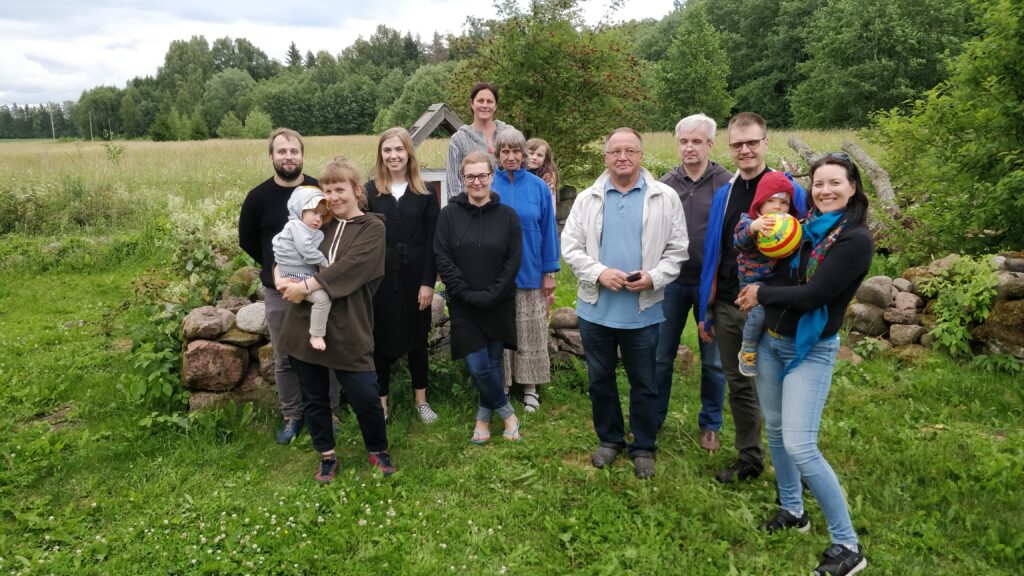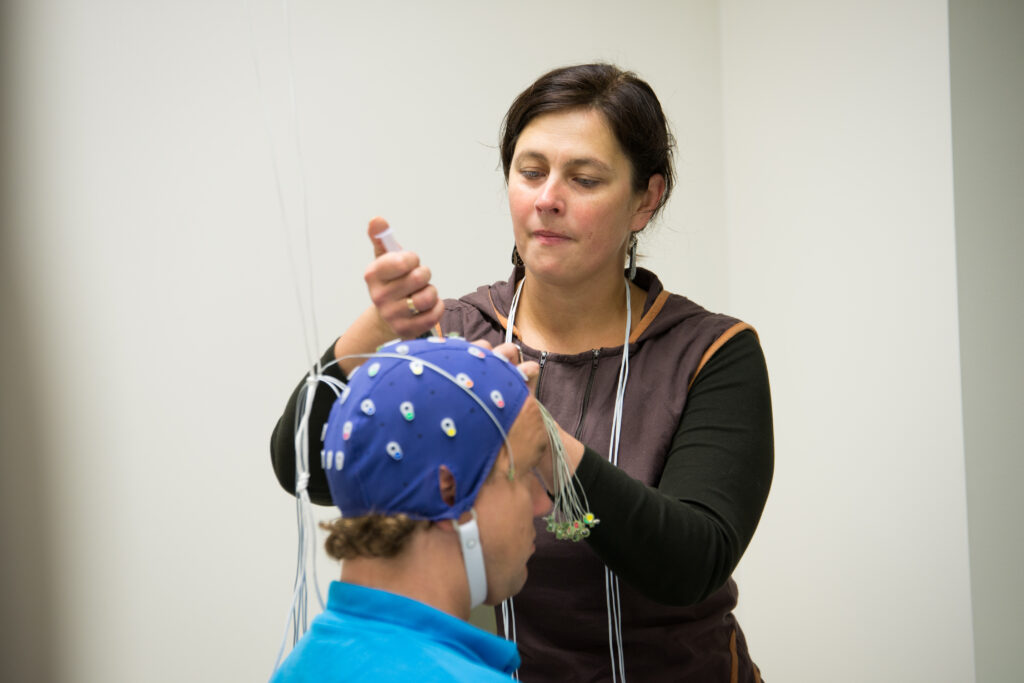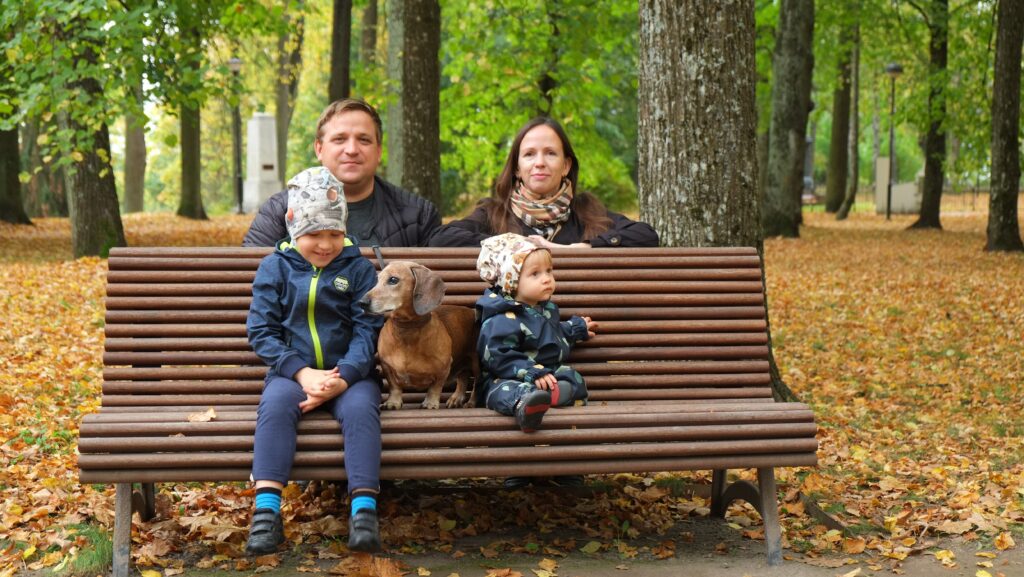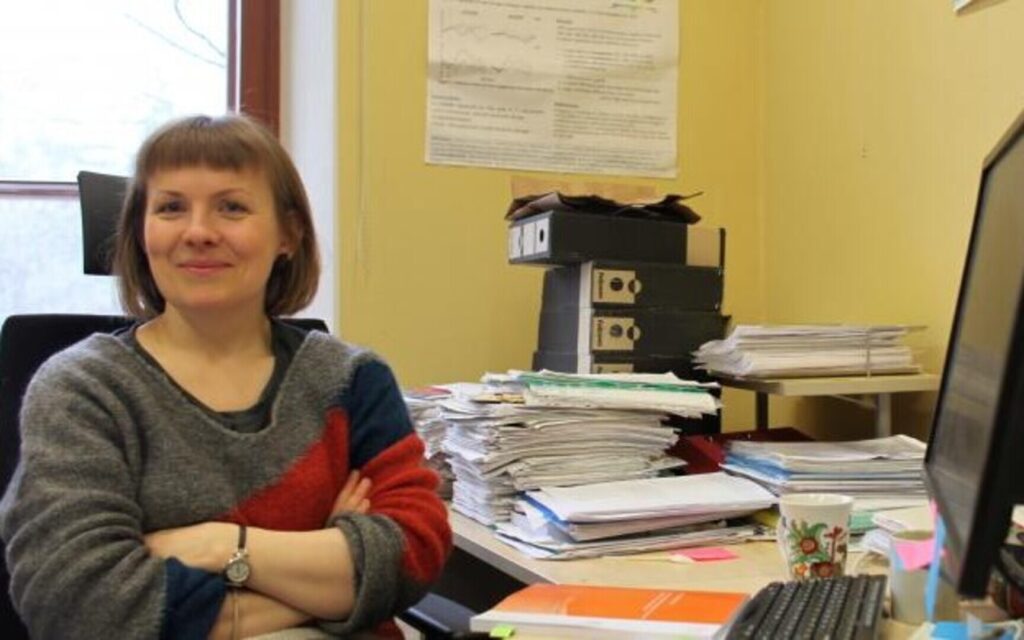One fourth of all University of Tartu professors are women and many are mothers – some parents to children as young as one; how do these mother scientists cope with work and raising their children?*
Kairi Kreegipuu, a professor of experimental psychology at the University of Tartu, has been involved with science for almost 20 years. The main reason that has kept her in the field is the opportunity to solve questions creatively and the variety that comes with experimental psychology. “Sometimes I am embarrassed because I am able to do such cool stuff for a living. There are so many of those who cannot do as awesome a job as I do,” Kreegipuu says.
She defines experimental psychology as a method which involves doing experiments in order to explain causes of behavior and cognition. For example, she has explored how a heated environment and physical activity affect people’s mental capacity for work.
Kreegipuu has had an excellent career. Just a few months ago, after having worked as an associate professor, she became a full professor, which is the highest rank in the hierarchy of university academics.
Working as a professor a lifestyle
According to the University of Tartu statistics, last year only one fourth of all professors were women (48 vs.138). However, the trend is changing, albeit slowly.
Kreegipuu says that, in order to make it to becoming a professor, a person needs to be willing to contribute a lot, take responsibility for projects and employees and be ready to respond to surprises, which most of the time happen at the most unsuitable times. “And deal with the guilt that you feel from time to time. Either about the undone work or from where you pinched that work time,” she describes.
Such fastidiousness occurs a lot on the higher academic level. To Kreegipuu’s mind, for people who have succeeded academically, it’s a part of their lifestyle. “It’s like a piece that belongs to their lives,” the professor says.
Kreegipuu adds that the best time for her to work is between the hours of 10 PM – 2 AM in the morning. It’s a system that she has created so between 6 PM -10 PM she can be dedicated to her family and “doing nothing” (meaning workwise). “Nights when I sleep 3-5 hours, occur every week,” Kreegipuu notes. She doesn’t find it odd. Quite the opposite, she sees it as a gift given to her by nature as it isn’t as exhausting for her as it might be for some of her colleagues.

Vital to have a team
Kreegipuu’s colleague and research fellow in her latest project, Liisi Kööts-Ausmees noted that for her, it sometimes feels like Kairi has more hours per day than everyone else. Kööts-Ausmees says this is only because Kreegipuu doesn’t waste any time on worrying how some things might be complicated or impossible to achieve. Instead, she gets straight into the subject and if needed, finds the people who have the know-how to make it happen.
“Working alone doesn’t get you anywhere,” Kreegipuu says. Therefore, she emphasises that in order to succeed, it is vital to have a team. And not just any team – it needs to be a creative one as it helps to get input from their ‘fresh’ ideas. In addition, in the field of psychology there is always a risk of interpreting the findings according to one’s own experiences. Therefore, it is also important to have more than just one person in the project, to have various viewpoints when interpreting the data.

The project Kreegipuu is currently leading has that ideal team. What makes the team even more outstanding is the fact that all the senior members are mothers. Moreover, three of the research fellows have a one-year-old or a younger child.
In Estonia, mothers are entitled to 1.5 years paid parental leave, whereas their job is preserved for three years. In the academic world, rules are there to be broken. Kreegipuu’s research fellow Kööts-Ausmees, whose youngest child is one year old, notes that if a scientist wants to keep moving forward in her career, pausing work for such a long period is not an option. Kööts-Ausmees gives an example, “I cannot ask my colleague to wait for two years while I am at home with a child and then come back and give the answer she needed.”

Ways to get the best of both worlds
There are ways to get the best of both worlds. What Kreegipuu herself did was arrange the work in a way that she could continue working with a reduced workload. However, she also has a suggestion. In her opinion, an opportunity for both parents to have the option to be on parental leave together could be of huge help.
In that way, there could be more flexibility to divide the running of errands and this would create an opportunity to continue working part-time. Despite the fact that it isn’t regulated by law, Kreegipuu and her husband still divided responsibilities rather equally. She finds that thanks to the “untraditional” family model, her children have had the opportunity to spend more time with their father than they would have if she had been the stay-at-home mom.
Kreegipuu’s second research fellow, Nele Põldver – mother of a one-year-old and a four-year-old – also admits that taking parental leave (regardless of gender) while in science is complicated. “Even 100% impossible as there is always an ongoing project, or you have students to tutor, or it is needed to report the results, or to review a manuscript,” Põldver says. For example, when a scientific journal sends back a manuscript for correction with a deadline up to two months, while being on parental leave then it leaves you no choice but to get straight into it.
What is more, in order to be able to ask the “right” questions and to be competent as a scientist, one must be familiar with up-to-date findings, which later need to be integrated into one’s own research. Therefore, she finds it almost impossible to leave the office for three years and later continue from where she had left off.
“If in one family both parents are in academia, it doesn’t always need to be the woman who puts her career on hold,” Põldver says. She points out that universities should therefore be more encouraging towards male researchers to stay home with the child. Põldver notes that the question actually needs to be addressed more widely in the society in order to dispel the myth that women have to be the primary caretakers of children.

Kööts-Ausmees, who has also worked as a clinical psychologist, sees only the benefits that come with the new role. “There are so many professions where integrating work and family life is impossible, to be able to stay at home with the newborn and work from distance at the same time,” she says. She further explains that as a shop assistant or kindergarten educator, it would be impossible to work from home. In the science field, arranging one’s work is more flexible.
Many challenges
One aspect that has truly bothered Kreegipuu in the science field, is the fact that in order to be eligible for a starting grant, a person has to have done their postdoc preferably in a foreign country. This, however, might be difficult to accomplish, especially when one’s partner is not from the academic world and the financial support received for the time abroad barely covers the expenses of the postdoctoral student. Not to mention taking the rest of the family with. “This concerns men as much as it concerns women as with a baby on the way, neither the mother nor the father wants to make the move right away,” Kreegipuu says.
Another challenge are relatives who require care. Even though there are care homes, it is another expense which might not be affordable.
Kreegipuu agrees that the reasons for doing the postdoc abroad are convincing, as the aims are to change the research focus compared to the doctoral research, establish new contacts and obtain new ideas. However, Kreegipuu thinks all of this can also be achieved in another way – with shorter visits.
For example, being away two weeks at a time in certain periods, which gives room for more flexibility. It creates an opportunity to show, with published articles and received grants, that the person has changed their research field, created new contacts and had different cooperation projects. “It’s possible but it’s much harder. If you change location, it is so much easier to adapt to the new environment and get inspired by new ideas,” Kreegipuu observes.
She adds that if a person is motivated and cannot go because of the obligations at home, she does not see why this shouldn’t be an option. Kreegipuu herself also didn’t follow the traditional path – she did her postdoc in Estonia at the University of Tartu, at the Institute of Sport Pedagogy. “I happily used the opportunity as I had two young children at the time and actually, I was also changing the field,” she says.

A lot of uncertainty in the science field
Põldver agrees with Kreegipuu’s suggestion about making the pursuit of a postdoc more flexible. “The corona crisis period showed how a lot of things with colleagues from abroad can be accomplished without going away,” Põldver says. She finds it is possible to arrange the postdoc in a way that the preparation of studies and analysing data would take place in the home country and for hands-on activities (that need her to be present), she would be abroad.
Põldver, who has been a reviewer of the grant applications, has seen how hard it is to actually get a grant in social sciences. “There is a section on the grant application, where I have to give points based on the applicant’s postdoctoral experience. And someone who has not been abroad will get very low points for it.”
Therefore, Põldver finds that without foreign experience, the chances of receiving funding are diminished to a minimum. Even though in Põlver’s opinion the applying conditions have become more flexible, the strong competition there is for grants still lessens the chances. Põldver says there is a saying between the scientists that only 10% of the applications written get funded. So, if a scientist wants a grant for one project, they need to write ten of them. And even then, the result might not turn out to be quite as expected.
Professor Kreegipuu also mentions that there is a lot of uncertainty in the science field. Limitations exist that keep a scientist from getting a grant which in turn takes away the chance to conduct research with their research team. “That causes a lot of stress,” she notes.
Even if the subject in question interests the employees hired to the research group, there can never be any certainty about how long there will be money to keep them on a payroll. For example, if one project ends, it might take time to be granted the next funding, so this period can turn into a two-year hole, where there is no money to pay the research team.
Despite it all, Kreegipuu still feels that her job is the best one possible. If only everyone had the same feeling about their job.
Cover: Kairi Kreegipuu’s family on a holiday. Private collection. * This article was originally published on 30 November 2020.

